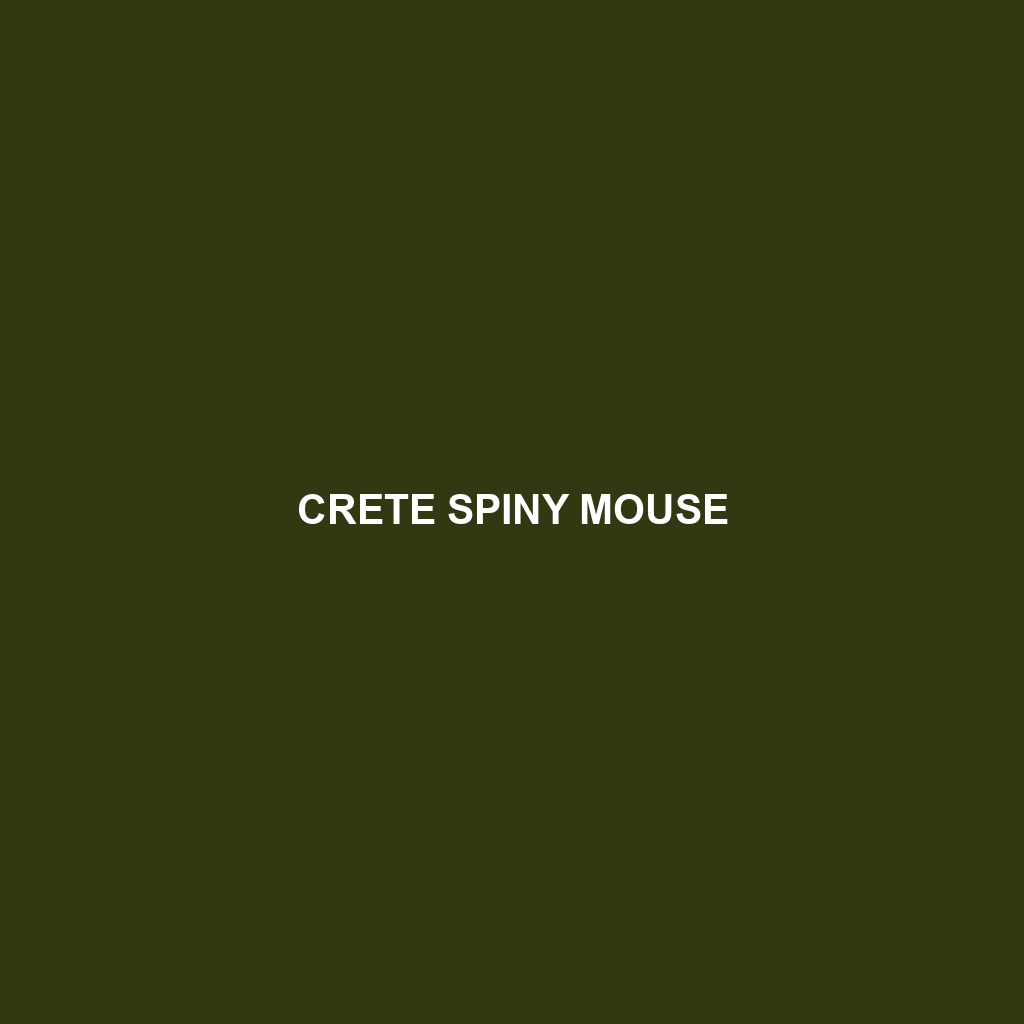Crete Spiny Mouse
Common Name: Crete Spiny Mouse
Scientific Name: Acomys minous
Habitat
The Crete Spiny Mouse is primarily found in the rocky and scrubby areas of Crete, Greece, thriving in Mediterranean climates. This species prefers habitats such as garrigue, maquis, and rocky outcrops, often seeking shelter in crevices and dense vegetation. The geographical distribution of this mouse is largely confined to the island of Crete, making it an endemic species of significant interest to researchers and conservationists alike.
Physical Characteristics
The Crete Spiny Mouse is characterized by its small size, typically measuring about 8 to 12 cm in body length, with a tail that can add an additional 8 to 10 cm. Its fur is spiny and coarse, providing protection against predators. The coloration ranges from light brown to grey, often with a paler underbelly. Notable features include large ears and prominent whiskers, which aid in navigation within its rocky environment. These physical adaptations, along with its robust build, make it well-suited for life in rugged terrains.
Behavior
Crete Spiny Mice are primarily nocturnal, displaying a variety of interesting behaviors. They are known for their agile movement, often climbing and jumping between rocks in search of food. Socially, these mice can be both solitary and communal, depending on the availability of resources. Their vocalizations include a range of squeaks, which may serve as communication during mating or alerts to potential threats. This adaptability in behavior allows them to efficiently exploit their environment.
Diet
The diet of the Crete Spiny Mouse consists mainly of seeds, nuts, and a variety of fruits. They are also known to consume insects and other small invertebrates, making them omnivorous. The preference for specific food sources may vary seasonally, with an increased reliance on fruits during warmer months. Their foraging behaviors are crucial for seed dispersal in their habitat, impacting the ecological health of the region.
Reproduction
The reproductive habits of the Crete Spiny Mouse include a breeding season that typically peaks in spring and summer. Females give birth to litter sizes ranging from 2 to 6 offspring after a gestation period of about 3 weeks. The young are altricial, meaning they are born relatively undeveloped and require care for several weeks. Maternal care is strong, with females often seen nurturing their young until they are weaned and ready to fend for themselves.
Conservation Status
Currently, the Crete Spiny Mouse is classified as vulnerable, primarily due to habitat loss and degradation. As development pressures increase on the island, conservation efforts are now more critical than ever to ensure the survival of this unique species. Conservation programs aim to protect their natural habitat and promote awareness about the importance of biodiversity in the region.
Interesting Facts
1. The Crete Spiny Mouse is not only limited to its spiny coat for protection but also utilizes its agility to escape predators.
2. This species has been studied for its behavioral ecology, offering insights into how small mammals adapt to their environments.
3. Despite its relatively small size, the Crete Spiny Mouse plays a critical role in seed dispersal, contributing to the health of its ecosystem.
Role in Ecosystem
The Crete Spiny Mouse plays a vital role in its ecosystem as it contributes to the food web by serving as prey for larger predators, including birds of prey and snakes. Furthermore, its feeding habits help in the dispersal of seeds, promoting plant diversity in the Mediterranean scrubland. By fostering a robust ecological balance, the Crete Spiny Mouse is integral to maintaining the health and sustainability of its native habitats.
